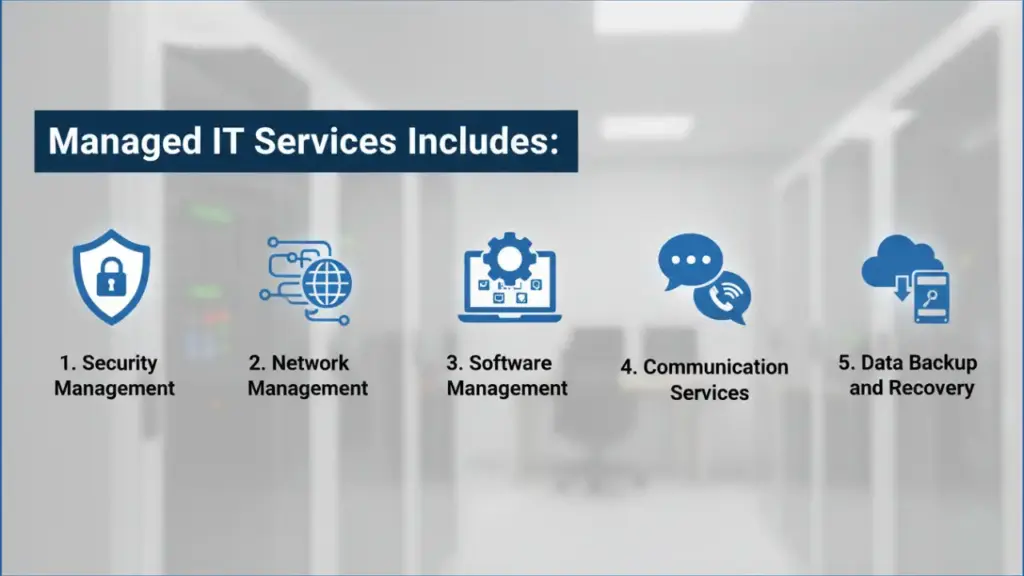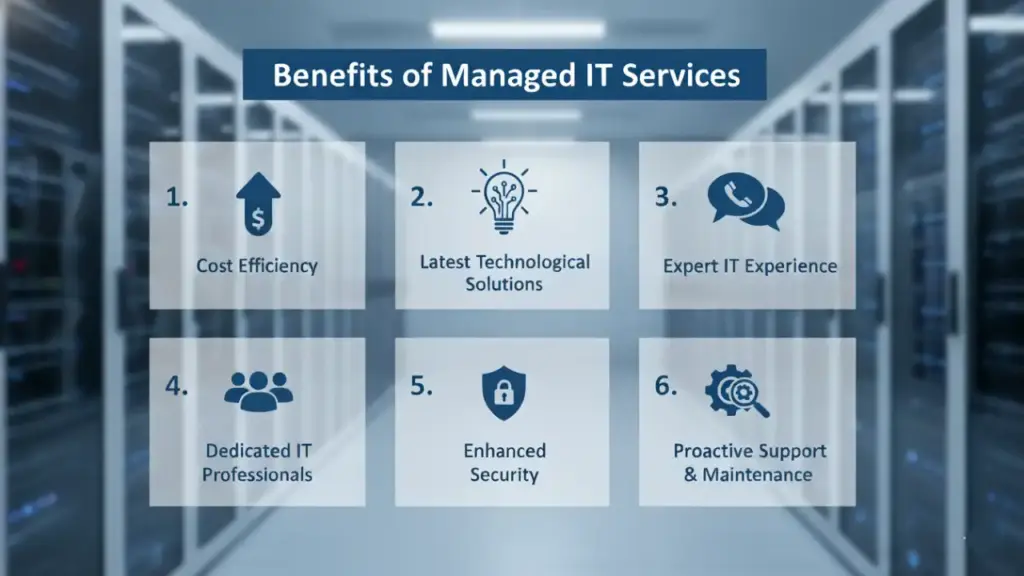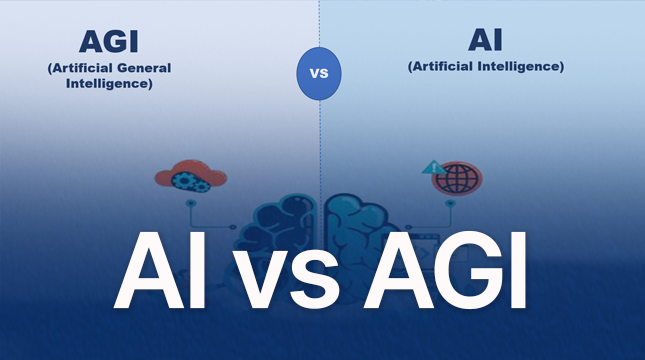This website uses cookies so that we can provide you with the best user experience possible. Cookie information is stored in your browser and performs functions such as recognising you when you return to our website and helping our team to understand which sections of the website you find most interesting and useful.
Managed IT Services: The Guide to Modern Business Solutions
Written by
NetizensJuly 22, 2024
6 min read

Businesses succeeding in the current market understand that IT is the core of success. However, some companies will be surprised to learn that these companies don’t manage IT requirements alone! The presence of Managed IT Services makes it possible to partner with an expert for IT assistance and oversight. These partners are expert IT companies that may also offer custom software development.
This blog will explore managed IT services and working with a company that provides these services.
What are Managed IT Services?
The term Managed IT services involves partnering with a third-party service provider to outsource IT responsibilities. This third-party outsourcing company is known as a Managed Services Provider (MSP).
They’re given the responsibility of handling most of the IT processes, including network management, data backups, recovery, and efficient operation of the IT infrastructure.
What Does Managed IT Services Include?
Managed IT services include a host of services, including the following, which are crucial aspects of business.

- Security Management: Enforce security measures and remain vigilant to threats to protect your systems from hacking and data leaks.
- Network Management: Connecting various networks and securing them to ensure seamless collaboration and work efficiency.
- Software Management: Designing, developing, updating, and maintaining customized software to ensure continued functionality.
- Communication Services: Handling and securing all electronic communication channels for confidentiality and safety.
- Data Backup and Recovery: Creating protocols for data backups and securing recovery systems in case of breaches and data loss.
This is not to be confused with IT consulting services. Both managed IT services and IT consulting services help small businesses grow. Having a dedicated IT expert to manage IT requirements is a benefit, especially for startups.
Difference Between Managed IT Services and Traditional IT Support
Traditional IT support differs from the more advanced managed IT services option. The former is reactive, making changes as the issue arises. The latter is proactive, monitoring the system to track, identify, and then fix issues before they lead to negative impacts.
This shows that managed information technology services are for advanced businesses. It’s the option for companies that want to treat IT activities as a continuous process.
This way, companies are not impeded when an issue arises. The problem is resolved before its complete effects are felt. These services aren’t only for enterprises, and are also a suitable tactic for SMEs.
Furthermore, IT companies also know how to save energy with smart IT solutions, helping modern businesses save money and align with positive environmental practices.
Benefits of Managed IT Services
There are valid reasons why more companies are becoming open to the idea of managed IT services.

1. Cost Efficiency
Companies may think that hiring a company for managed IT services is expensive or complicated. In actual fact, that is far from the truth! This is the cost-saving option in the long term. Their services are available on an hourly basis, which proves more cost-efficient than full-time employment.
2. Latest Technological Solutions
Having a managed IT services partner also gives you access to the latest and best technology. This is a boost for companies that don’t have the resources to keep up with technology. Perhaps they have a small team and can’t afford to spend time on keeping updated with the evolving trends.
3. Expert IT Experience
Smaller companies have smaller IT teams, which reduces their ability to grow. When hiring an external team to help and manage IT operations, the team size is limitless. The best part is that all of the IT staff from the outsourcing firm are experienced professionals. These experts understand the importance of quality assurance and can ensure it throughout the partnership.
4. Dedicated IT Professionals
Another feature of outsourcing your IT requirements is the ability to get dedicated resources. The presence of these dedicated resources provides many benefits for companies. This provides staff with the human resources necessary to scale operations.
5. Enhanced Security
Having an extra set of eyes on all IT functions grants a company additional security. This ensures greater security and safety for data and staff. This is a bonus for companies that cannot afford to spend as much on security.
6. Proactive Support & Maintenance
Software support and maintenance are just as important as software development. Failing to keep existing software up to date can lead to security and efficiency issues later. This makes it ideal to have a reliable external IT partner to dedicate time to these activities. It’s how startups develop their products within their limited budget. Learn more about it in: From Idea to MVP: How IT Companies Can Support Startups.
Conclusion
Managed IT services are a true service for modern businesses. It removes all the complications from the process and aligns with the strengths of smaller, compact, cost-conscious companies.
It allows businesses to tend to their core business responsibilities while their IT partner manages IT requirements. IT processes can be complicated yet so vital. Why risk making a mistake when you can outsource to a professional IT company? Partner with Netizens Technologies to get professional website development, support, network management, and more.
FAQs
1. What are the benefits of managed IT services?
2. What are the risks of using an MSP?
3. What is the scope of IT managed services?
4. What is the purpose of IT service management?
5. What is another name for managed services?

Let's Start Your Project
Get free consultation for your digital product idea to turn it into reality!
Get StartedRelated Blog & Articles

Netizens
May 31, 2024
Why is chat gpt not working | Netizens Technologies
ChatGPT has become an integral part of many people's daily routines, whether for work, study, or

Netizens
June 11, 2024
Headline Optimization for Google Ads
In the bustling world of digital marketing, headlines play a pivotal role. They are the first

Netizens
August 2, 2024
What is the Difference Between AI and AGI?
You've undoubtedly heard the terms AI and AGI used interchangeably if you've been reading tech news




